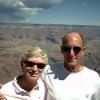More practical IFR advice
-
Members Online
- 201er
- toto
- TCC
- Jake@BevanAviation
- hoot777
- woodwood304
- Guy123
- tony
- jeff s
- catchman86
- redbaron1982
- mooneyflyer
- KLRDMD
- BenjaminK
- Sabremech
- Herman_1965
- bluehighwayflyer
- jcolgan
- 00-Negative
- Greg Ellis
- ta2too
- mooneyflyfast
- ArtVandelay
- M20F
- Paul Thomas
- Scott Ashton
- AMG880
- Barneyw
- Rmfriday
- vorlon1
- N201MKTurbo
- wolfbyte


Recommended Posts
Join the conversation
You can post now and register later. If you have an account, sign in now to post with your account.